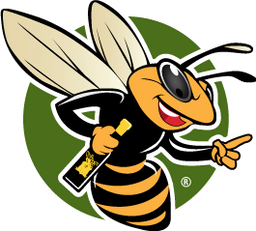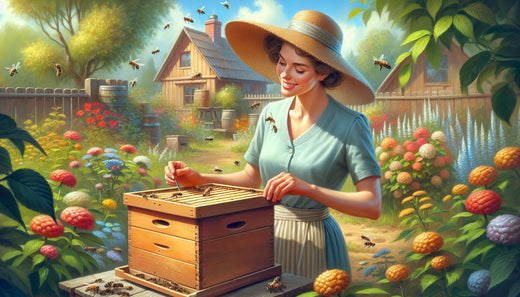Starting a beekeeping journey is an exciting and rewarding experience, but it can feel overwhelming for beginners. One of the most critical decisions for new beekeepers is selecting the right bee hive. A good hive ensures a safe and productive environment for the bees while simplifying the management process for the beekeeper.
The best bee hive for beginners combines ease of use, cost-effectiveness, and accessibility. By understanding the different hive designs and their benefits, new beekeepers can make informed decisions and set the foundation for a successful and enjoyable experience. This guide will explore top hive options tailored for beginners, ensuring a smooth transition into the fascinating world of beekeeping.
The Basics of Beekeeping
Beekeeping, or apiculture, involves managing bee colonies to collect honey and other bee products, such as beeswax, pollen, and propolis. It also plays a vital role in supporting pollination and biodiversity. For beginners, understanding the fundamentals of bee behavior, hive management, and environmental factors is essential.
A bee colony consists of three main types of bees:
-
The Queen: The queen is the sole egg-laying member of the hive. She ensures the colony’s growth and continuity by laying thousands of eggs during her lifespan.
-
Worker Bees: Female bees that handle various tasks, including collecting nectar and pollen, building comb, feeding the brood, and guarding the hive.
-
Drones: Male bees whose primary role is to mate with a queen during her mating flights.
Successful beekeeping involves choosing a suitable hive, conducting regular inspections, and addressing potential threats. Common pests like Varroa mites and small hive beetles, along with diseases such as American foulbrood, can harm the colony if not managed effectively. Understanding local environmental factors, such as available forage and weather conditions, further enhances the chances of success.
Aside from the practical benefits of honey and bee products, beekeeping provides immense satisfaction, contributes to local ecosystems, and promotes biodiversity. For beginners, the journey into beekeeping is as enriching as the rewards it offers.
Types of Bee Hives for Beginners
Choosing the right bee hive is critical to ensuring a smooth start in beekeeping. Each hive design has unique advantages and caters to different preferences and management styles. Here are the three most common hive types:
1. Langstroth Hives
Langstroth hives are the most widely used hive type and are particularly beginner-friendly due to their modular design. They consist of stacked rectangular boxes called supers, which can be added or removed as the colony grows. Inside the boxes are removable frames that allow easy inspection and honey extraction.
Advantages:
-
High honey yield.
-
Standardized design for easy compatibility with tools and accessories.
-
Removable frames simplify inspections and management.
Considerations:
-
Requires regular maintenance and monitoring.
-
Can become heavy when full of honey.
2. Top-Bar Hives
Top-bar hives feature a horizontal design with wooden bars across the top where bees build their comb. This design promotes natural comb-building behaviors and minimizes disturbances to the colony during inspections or harvesting.
Advantages:
-
Encourages natural comb-building.
-
Simplified honey harvesting by removing individual bars.
-
Affordable and easy to construct.
Considerations:
-
Lower honey yield compared to Langstroth hives.
-
It may require more hands-on management.
3. Warre Hives
Warre hives, often called “people’s hives,” mimic natural bee habitats. They consist of vertically stacked boxes that expand downward as the colony grows. This hive type emphasizes minimal intervention and sustainable practices.
Advantages:
-
Low maintenance and minimal disturbance to bees.
-
Supports natural behaviors and colony health.
-
Excellent insulation for temperature regulation.
Considerations:
-
Harvesting honey can be more challenging.
-
Less flexibility for inspections compared to Langstroth hives.
Key Features to Consider When Choosing a Bee Hive
When selecting a bee hive, beginners should focus on features that simplify management and support a healthy colony. Here are some important factors to consider:
1. Size and Capacity
The size of the hive determines its capacity to house bees and store honey. Langstroth hives are available in 8-frame and 10-frame configurations, with the 10-frame option offering more space for a growing colony. Beginners should choose a size that aligns with their goals and local environmental conditions.
2. Material and Durability
Hives are typically made from wood, plastic, or a combination of materials. Wooden hives, such as those made from cedar or pine, provide excellent insulation and are durable when properly maintained. Plastic hives are resistant to pests and weather but may lack the insulation qualities of wood. Consider weather-proof finishes or coatings to enhance the hive’s longevity.
3. Ease of Use
Beginner beekeepers benefit from hives with user-friendly features, such as removable frames, adequate entrance sizes, and straightforward assembly. Langstroth hives excel in ease of use due to their modular design, while top-bar hives offer simplicity with fewer components. Choose a hive that matches your comfort level with tasks like inspections and honey harvesting.
4. Cost
For beginners, cost is an important consideration. Langstroth hives are widely available and can be purchased at various price points, while top-bar hives are more affordable to construct. Warre hives often fall in the mid-range and appeal to those seeking a sustainable, low-maintenance option.
Recommended Bee Hives for Beginners
Here are three hive options that balance ease of use, functionality, and affordability:
1. Langstroth Hive
Langstroth hives are ideal for beginners seeking a practical and productive hive. Their modular design allows for easy expansion, and the removable frames simplify inspections and honey harvesting. Available in wood or plastic, Langstroth hives are durable and yield high honey production.
2. Top-Bar Hive
Top-bar hives appeal to beekeepers who prefer a natural approach. They are affordable, easy to construct, and encourage bees to build comb naturally. The horizontal design makes inspections manageable, and honey can be harvested with minimal disruption.
3. Warre Hive
Warre hives offer a minimalist design that mimics natural bee habitats. These hives are low-maintenance and ideal for beginners who prefer a hands-off approach. The stacked design ensures excellent insulation and supports colony health.
Conclusion
Choosing the right bee hive is a crucial step for beginners embarking on their beekeeping journey. Whether you opt for the modular Langstroth, the natural top-bar, or the minimalist Warre hive, each design offers unique benefits that cater to different preferences and management styles.
By focusing on essential features like size, material, and ease of use, beginners can create an environment that supports healthy bee colonies and productive beekeeping. Embracing this rewarding hobby not only provides personal satisfaction but also contributes to pollination and biodiversity. With the right hive and a commitment to learning, anyone can enjoy the art and science of beekeeping.
Frequently Asked Questions (FAQs)
1. What is the best bee hive for beginners?
The Langstroth hive is often recommended for beginners due to its modular design, ease of use, and high honey yield. However, top-bar and Warre hives are also excellent choices depending on personal preferences.
2. How much does it cost to start beekeeping?
The initial cost of beekeeping can range from $200 to $500, including the hive, bees, protective gear, and tools. Costs vary depending on the type of hive and equipment chosen.
3. How often should I inspect my hive?
Beginners should inspect their hives every 7-10 days during the active season to monitor colony health, check for pests or diseases, and ensure the queen is laying eggs.
4. What are common pests and diseases in beekeeping?
Common threats include Varroa mites, small hive beetles, and diseases like American foulbrood. Regular inspections and preventative measures can help manage these issues.
5. Can I build my own bee hive?
Yes, many beginners construct their own hives, particularly top-bar hives, which are simple and affordable to build. DIY hives can be a cost-effective option for starting beekeeping.



